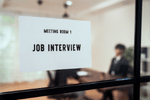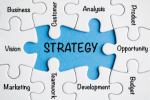Introduction: Lights, Camera, Interview!
So, you’ve landed an interview at Netflix? Congratulations! You’re about to step into the spotlight at one of the most innovative companies in the entertainment industry. But before you start practicing your acceptance speech, let’s talk about what makes Netflix interviews unique and how you can prepare to steal the show.
Netflix isn’t just any tech company – it’s the powerhouse that transformed how we consume entertainment. Netflix has always been about innovation and pushing boundaries. And guess what?
They’re looking for people who can do the same.
Here’s the plot twist: Netflix’s hiring philosophy isn’t just about finding someone who can code, design, or market. They’re on a talent hunt for individuals who can blend technical prowess with cultural alignment. It’s like finding the perfect ingredients for a binge-worthy series – you need both compelling characters and a gripping storyline.
So, how do you prepare for this blockbuster opportunity? By the end of this guide, you’ll be ready to navigate the Netflix interview process with the confidence of a seasoned showrunner. We’ll cover everything from understanding Netflix’s unique culture to acing those tricky technical questions.
Ready to start your Netflix journey? Grab your popcorn (or your laptop), and let’s dive in!
- Introduction: Lights, Camera, Interview!
- Netflix’s Company Culture and Values: The Secret Sauce
- Netflix Interview Process: Your Binge-Worthy Journey
- Role-Specific Interview Focuses: Choose Your Character
- Tackling Technical Interviews: Debug Like a Pro
- Mastering Behavioral Interviews: Show Your True Colors
- Netflix-Specific Interview Questions: Your Moment to Shine
- Your Pre-Interview Binge: Preparation Strategies
- The Big Day: Lights, Camera, Action!
- The Final Credits: You’re Ready to Roll!
- FAQs: Your Burning Questions Answered

Netflix’s Company Culture and Values: The Secret Sauce
Before you step onto the Netflix stage, you need to know your audience. In this case, that means understanding Netflix’s company culture and values. Think of it as researching your character before a big audition – the better you understand the role, you’re auditioning for, the more likely you are to nail it.
The Culture Deck: Netflix’s Screenplay for Success
Netflix’s famous culture deck, often referred to as the Netflix culture deck, isn’t just another corporate document gathering digital dust. It’s the company’s manifesto, a blueprint for how they operate and what they value.
If Netflix were a movie, the culture deck would be its script.
Key elements of Netflix’s culture include:
- Freedom and Responsibility: Netflix trusts you to make big decisions (and big mistakes). They’re NOT looking for rule-followers, but for judgment-driven risk-takers.
- Innovation: Netflix loves people who can dream up the next big thing in entertainment. Can you envision the future of streaming?
- Inclusion: Diversity isn’t just a buzzword at Netflix. They’re committed to fostering an inclusive environment where everyone’s voice is heard.
From Script to Screen: How Netflix’s Values Play Out in Real Life
Now, let’s translate these values into action. How do they manifest in the day-to-day life of Netflix employees?
- Freedom and Responsibility in Action: At Netflix, you won’t find a traditional vacation policy. Instead, they have a “take what you need” approach. Sounds great, right? But remember, with great freedom comes great responsibility. Netflix expects you to manage your time wisely and deliver results.
- Innovation on the Job: Netflix encourages employees to take smart risks. They celebrate both successes and failures, as long as you learn from them. Remember the time Netflix split its DVD and streaming services? It didn’t go as planned, but they learned and adapted.
- Inclusion in Practice: Netflix doesn’t just talk about diversity; they live it. From diverse content like “Bridgerton” to inclusive hiring practices, Netflix walks the walk.
Why This Matters for Your Interview
Understanding Netflix’s culture, isn’t just about impressing your interviewer (although it will). It’s about figuring out if you’re a good fit for Netflix – and if Netflix is a good fit for you.
During your interview, you’ll likely be asked questions that probe your alignment with these values. For example:
- “Tell me about a time you took a calculated risk. What was the outcome?”
- “How do you approach decision-making when you don’t have all the information?”
- “Describe a situation where you promoted inclusivity in your workplace.”
As you prepare your answers, think about how your experiences align with Netflix’s values. Have you taken risks in your career? How do you handle autonomy? Can you adapt to a fast-paced, ever-changing environment?
Remember, Netflix isn’t looking for perfection. They’re looking for people who can grow, adapt, and contribute to their unique culture. So be honest, be yourself, and let your passion for innovation shine through.
Are you ready to show Netflix that you’re not just another applicant, but a potential culture carrier? In the next sections, we’ll dive into the nitty-gritty of the interview process and how to tackle those tricky questions.

Netflix Interview Process: Your Binge-Worthy Journey
Alright, future Netflix star, it’s time to dive into the Netflix hiring process. Think of this as your own Netflix series – each stage is an episode, building up to the thrilling season finale (aka getting the job). The Netflix hiring process is focused on team dynamics, and the interview processes can vary based on the specific team and position applicants are targeting.
Let’s break it down:
Episode 1: Application and Resume Screening
This is your pilot episode. Your resume is the teaser that needs to hook the Netflix hiring managers who play a significant role in evaluating candidates. Make it compelling, highlight your achievements, and show how you align with Netflix’s values. Remember, they’re looking for the next big hit!
Pro Tip: Tailor your resume to the job description. If they’re looking for a “Data Ninja,” show them your data kung fu!
Episode 2: Initial Phone or Video Screen
Congratulations, you’ve made it to the first round! This is usually a 30-45 minute chat with a recruiter or hiring manager, often referred to as the initial phone interview. They’ll assess your basic qualifications and cultural fit.
What to expect:
- Questions about your background
- Why you’re interested in Netflix
- Your understanding of the role
How to nail it: Research Netflix’s recent projects, be enthusiastic, and have a strong “why Netflix” story ready.
Episode 3: The Technical Assessment
If you’re going for a technical role, this is where you’ll showcase your skills through technical interview questions. The technical phone screen typically lasts 45-60 minutes and includes a mix of technical, behavioral, and situational questions. It could be a coding challenge, a system design problem, or a take-home assignment.
Pro Tip: Practice coding on a whiteboard or Google Docs. Netflix might use these instead of your comfy IDE!
Episode 4: The On-site Interviews (or Virtual Equivalent)
This is your big day – a series of interviews with potential team members, managers, and sometimes cross-functional partners, all part of the interview process.
What to expect:
- 4-6 interviews, each 45-60 minutes long
- A mix of technical, behavioral, and cultural fit questions
- Possibly a presentation or design challenge
How to prepare:
- Review our upcoming sections on technical and behavioral questions
- Practice explaining complex ideas simply
- Prepare questions for your interviewers – remember, you’re interviewing them too!
Episode 5: The Final Executive Interview
If you’ve made it this far, take a moment to celebrate! This final round is often with a senior leader and focuses heavily on cultural fit and your potential impact at Netflix.
Key tip: Be yourself. They want to see the real you and how you’ll contribute to Netflix’s success story.

Role-Specific Interview Focuses: Choose Your Character
Just like Netflix has different genres, they have different roles – each with its own interview flavor. Let’s explore:
Software Engineering: The Code Masters
What they’re looking for: Problem-solving skills, coding proficiency, and system design chops, as reflected in Netflix interview questions.
“Design a system that can handle Netflix’s global streaming traffic.”
How to prepare:
- Practice coding questions on platforms like LeetCode
- Study system design principles
- Be ready to discuss trade-offs in your solutions
Data Engineering: The Data Alchemists
What they’re looking for: Expertise in data pipelines, big data technologies, and SQL optimization.
“How would you design a data pipeline to process viewer behavior data in real time?”
How to prepare:
- Brush up on big data technologies (Hadoop, Spark, etc.)
- Practice SQL query optimization
- Be ready to discuss data modeling and ETL processes
Product Management: The Vision Keepers
What they’re looking for: Product strategy, user experience knowledge, and data-driven decision making.
“How would you measure the success of Netflix’s ‘Skip Intro’ feature?”
How to prepare:
- Study Netflix’s product decisions and features
- Practice product case studies
- Be ready to discuss metrics and A/B testing
Content and Marketing: The Storytellers
What they’re looking for: Creativity, market analysis skills, and brand strategy understanding.
“How would you market a new Netflix original series to a global audience?”
How to prepare:
- Analyze Netflix’s current marketing strategies
- Stay updated on entertainment industry trends
- Be ready to pitch creative ideas
Leadership Roles: The Showrunners
What they’re looking for: Vision setting, team management, and strategic decision-making abilities.
“How would you lead Netflix’s expansion into a new market?”
How to prepare:
- Review Netflix’s global strategy
- Prepare examples of your leadership experiences
- Be ready to discuss how you’d embody Netflix’s leadership philosophy

Tackling Technical Interviews: Debug Like a Pro
If you’re going for a technical role, this section is your debugging guide to acing those tricky technical questions. Remember, it’s not just about getting the right answer – it’s about your problem-solving process.
Algorithms and Data Structures: Your Coding Toolkit
Netflix loves efficiency – in their streaming and in their code. Be ready to optimize! For more practical advice, consider these Netflix interview tips: practice coding questions on platforms like LeetCode and focus on optimizing your solutions.
Sample question: “Design an efficient caching system for frequently watched movies.”
How to approach it:
- Clarify the requirements (e.g., cache size, expected hit rate)
- Consider different data structures (e.g., hash map + doubly linked list for LRU cache)
- Walk through your solution with examples
- Discuss time and space complexity
- Suggest potential improvements or trade-offs
System Design: Architecting the Netflix of Tomorrow
Netflix operates at a massive scale. Show them you can think big!
“Design Netflix’s video recommendation system.”
How to approach it:
- Gather requirements (e.g., scale, features, latency expectations)
- Start with a high-level design
- Deep dive into critical components
- Discuss data flow and storage
- Address scalability and potential bottlenecks
Pro Tip: Don’t forget to mention important Netflix concepts like their Content Delivery Network (CDN) and how it impacts system design!
Coding Best Practices: Write Code That Tells a Story
Netflix values clean, maintainable code. Show them you’re not just a coder, but a code craftsperson.
Key points to remember:
- Write modular, reusable code
- Use clear naming conventions
- Add comments to explain complex logic
- Consider edge cases and error handling
Bonus Tip: If you’re doing a remote interview, practice coding in a Google Doc or a simple text editor. No fancy IDEs here!

Mastering Behavioral Interviews: Show Your True Colors
Netflix isn’t just hiring your skills; they’re hiring you. Behavioral questions are their way of getting to know the real you.
Here’s how to shine:
The STAR Method: Your Secret Weapon
When answering behavioral questions, mastering behavioral and interviewing skills is crucial. Use the STAR method:
- Situation: Set the scene
- Task: Describe your responsibility
- Action: Explain what you did
- Result: Share the outcome
Aligning with Netflix Values: Speak Their Language
Remember those Netflix values we talked about earlier? Here’s your chance to show how you embody them.
“Tell me about a time you took a calculated risk.”
How to answer:
- Choose a relevant experience
- Use the STAR method to structure your answer
- Highlight how your actions align with Netflix’s value of innovation and risk-taking
- Discuss what you learned, even if the outcome wasn’t perfect
Demonstrating Leadership and Ownership
Netflix loves people who take ownership. Show them and the hiring managers you’re not afraid to lead!
“Describe a situation where you had to make a decision without all the information.”
How to answer:
- Pick a scenario that showcases your decision-making skills
- Explain your thought process and how you gathered available information
- Discuss the decision you made and why
- Share the outcome and any lessons learned
Pro Tip: Have 5-7 stories prepared that you can adapt to different behavioral questions. Practice telling these stories concisely and engagingly.

Netflix-Specific Interview Questions: Your Moment to Shine
This is where your Netflix knowledge takes center stage. Let’s look at some Netflix-specific questions and how to approach them:
“How would you improve Netflix’s user experience?”
“I’d focus on enhancing content discovery. For example, we could implement an AI-driven ‘Mood Matcher’ feature. Users could input their current mood or occasion, and Netflix would curate a perfect watch list. This not only improves user experience but also increases engagement and watch time.”
“If you could add one feature to Netflix, what would it be and why?”
“I’d introduce a ‘Netflix Party’ feature for all devices. This would allow friends to watch content together remotely, with synchronized playback and a chat feature. It taps into the social aspect of watching TV and could increase user engagement and retention.”
“How would you measure the success of a new Netflix feature?”
“I’d use a combination of quantitative and qualitative metrics. Quantitatively, I’d look at user engagement (time spent using the feature), impact on watch time, and effect on subscriber retention. Qualitatively, I’d analyze user feedback and satisfaction scores. I’d also set up A/B tests to compare user behavior with and without the feature.”
“What do you think is Netflix’s biggest challenge in the next 5 years?”
“I believe one of Netflix’s biggest challenges will be maintaining its market leadership in an increasingly crowded streaming landscape. With new entrants like Disney+ and established tech giants like Amazon Prime Video, Netflix needs to continue innovating in content creation and user experience. Additionally, managing content costs while expanding globally will be crucial.”
“How would you improve Netflix’s recommendation algorithm?”
“I’d focus on enhancing the algorithm’s understanding of context and mood. Currently, recommendations are largely based on viewing history and ratings. I’d incorporate factors like time of day, day of the week, and even external data like weather or current events. For instance, on a rainy Sunday afternoon, the algorithm might suggest longer, more immersive content. I’d also implement a short questionnaire that pops up occasionally, asking users about their current mood or what type of content they’re in the mood for. This direct input could significantly improve the accuracy of recommendations.”
“Describe how you would design Netflix’s content delivery network.”
“I’d design a globally distributed CDN with points of presence (PoPs) strategically located near major population centers. Each PoP would cache popular content, reducing latency and bandwidth costs. I’d implement intelligent routing to direct users to the nearest PoP with their desired content. To handle peak loads, I’d use a combination of predictive scaling based on historical data and reactive scaling for unexpected spikes. I’d also implement a robust monitoring system to quickly identify and mitigate any issues. Finally, I’d optimize the encoding and compression of video content to reduce file sizes without compromising quality, allowing for smoother streaming even in areas with slower internet speeds.”
“How would you decide which original content Netflix should produce?”
“I’d approach this with a data-driven strategy combined with creative insight. First, I’d analyze viewing patterns and engagement metrics of existing content to identify trends and underserved genres or themes. I’d also look at social media trends and cultural moments to spot potential topics of interest. Next, I’d consider our global audience and look for stories that could resonate across multiple regions. I’d then balance this data with input from creative executives who can spot unique, groundbreaking ideas that data alone might miss. Finally, I’d consider production costs versus potential viewership to ensure a good ROI. The goal would be a diverse content slate that includes both ‘safe bets’ based on data and riskier, innovative projects that could become breakout hits.”
“What strategies would you suggest for Netflix to expand in international markets?”
Sample answer: “I’d propose a multi-faceted approach. First, I’d focus on producing and acquiring more local content in target markets. This not only attracts local viewers but also differentiates Netflix from global competitors.
Second, I’d adapt our pricing strategy for each market, potentially offering mobile-only plans in markets where smartphones are the primary means of internet access.
Third, I’d forge partnerships with local telecom companies for bundled services, increasing our reach.
Fourth, I’d invest in improving our streaming technology to work well in areas with slower or less reliable internet.
Finally, I’d ensure our UI/UX is culturally adapted, not just translated, to resonate with local users. Throughout this process, I’d emphasize maintaining Netflix’s core values and quality standards while respectfully integrating into each new market.”
“How would you handle a scenario where a popular Netflix show is receiving backlash on social media?”
Sample answer: “I’d approach this situation with a balance of responsiveness and thoughtfulness. First, I’d quickly assemble a cross-functional team including PR, content, and legal representatives to assess the situation. We’d analyze the nature and scope of the backlash to understand the core issues. If the concerns raised are valid, I’d draft a response acknowledging them and outlining any actions we plan to take. This could include adding content warnings, editing controversial scenes, or even in extreme cases, removing the content while we review it. If the backlash seems to stem from misunderstanding, we’d focus on educating our audience about the show’s context or intent. Throughout this process, I’d ensure we’re being transparent with our audience and staying true to Netflix’s values of creative expression and responsibility. I’d also use this as an opportunity to review our content evaluation processes to prevent similar issues in the future.”
Remember, these answers are just starting points. Netflix values original thinking, so don’t be afraid to bring your unique perspective to these questions. The key is to demonstrate your understanding of Netflix’s business, your analytical skills, and your ability to think creatively about complex problems.

Your Pre-Interview Binge: Preparation Strategies
Just like you’d binge-watch a Netflix series before the new season drops, it’s time to binge on preparation for your interview. Here’s your watching guide:
- Technical Prep: If you’re going for a technical role, platforms like LeetCode, HackerRank, and System Design Primer are your best friends. Aim to solve problems daily.
- Cultural Prep: Rewatch (re-read) Netflix’s culture deck. Follow Netflix Tech Blog and their engineering Twitter accounts. Understand their technology stack and recent projects.
- Mock Interviews: Grab a friend or use a platform like Skillful Talk for mock interviews. Practice speaking your thoughts aloud as you solve problems.
- Research: Stay updated on Netflix’s current projects, challenges, and competitors. Check out their quarterly earnings reports for insights.
- Prepare Your Questions: Remember, you’re interviewing them too! Have thoughtful questions ready about the role, team, and Netflix’s future plans.

The Big Day: Lights, Camera, Action!
It’s showtime! Here’s how to make sure your Netflix interview is a blockbuster hit:
- Test Your Tech: If it’s a virtual interview, test your internet connection, camera, and microphone beforehand.
- Dress the Part: Even if it’s virtual, dress professionally. Think “Netflix premiere” rather than “Netflix and chill”.
- Bring Your Energy: Show your enthusiasm for the role and for Netflix. Energy and passion can be your secret weapons!
- Listen Actively: Pay attention to your interviewers. Sometimes they drop hints or additional context that can help you.
- Be Authentic: Netflix values authenticity. Don’t try to be someone you’re not – show them the real you.
- Handle Curveballs Gracefully: If you get a question you weren’t expecting, take a breath, think out loud, and do your best.
- Follow Up: Send a thank-you email after your interview. Mention specific points from your conversation to make it personal.

The Final Credits: You’re Ready to Roll!
Congratulations! You’ve made it through our Netflix Interview Guide. You’re now armed with the knowledge and strategies to make your Netflix interview a smashing success.
Remember, Netflix is looking for passionate, innovative people who can help shape the future of entertainment. They want to see the real you – your skills, your creativity, and your unique perspective.
As you prepare for your interview, keep this guide handy, but don’t forget to let your own personality shine through. After all, Netflix isn’t just hiring a set of skills; they’re hiring you.
Break a leg, future Netflix star. The spotlight is yours!




